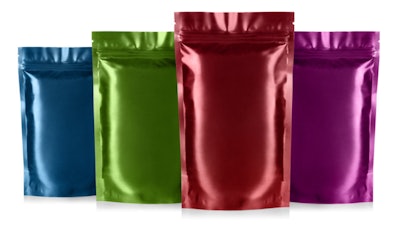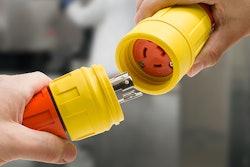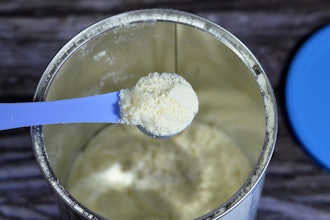
The packaging industry is experiencing constant and rapid change, driven by consumer expectations and technological advancements. With the demand for fresh, safe, quality products top of mind with consumers, there leaves little margin for error when it comes to package leaks and fluctuating results due to inaccurate testing equipment.
However, brand owners across the food industry are facing issues such as lack of precise validation processes of Factory Acceptance Tests (FATs), reliance on destructive testing methods that are less compatible with environmentally friendly packaging and the absence of testing uniformity altogether. While leak detection technology has advanced to address these problems, the need for precise, certain and time-efficient solutions has led many companies to look to more scientific testing methods.
Companies can also utilize the following tips to prevent common mishaps:
1. Leverage Warranty and Service Contracts
Many Original Equipment Manufacturers (OEMs) offer customers warranty and service contracts to help resolve equipment issues after installation. However, information about machine status may not leave a clear data trail from previously performed service tests and requirements if the machine being used to test for leaks, for example, is outdated.
Without this trail, it becomes harder for OEMs to determine the root cause of malfunctions and resolve them. With the adoption of more technologically advanced, reliable and traceable solutions, brands can rest assured knowing they are protected with warranty and service agreements that will be supported by a high-functioning machine.
2. Protect Package Integrity and Brand Promise
Companies today are placing an increasing importance on sustainability, and thus are re-examining their choice of packaging materials or films. In general, brands must be aware of the durability and compatibility of these materials and ensure they will not only properly protect a product and optimize shelf life, but also work well with their existing equipment.
By the same token, it is equally as important to understand and invest in technology that properly evaluates packages and potential leaks, which can have a detrimental effect on product quality and freshness. Advanced leak detection equipment can help ensure that the package stays intact and is leak-free, safeguarding a brand’s promise while simultaneously leaving the product in a condition suitable for sale.
3. Meet Industry Requirements
FATs and Site Acceptance Tests (SATs) are standard validation processes that are necessary for certifying that equipment is functioning properly and safely at both OEM and customer facilities. These are vital steps for OEMs and producers to perform, but many find that the most effective companies have the most comprehensive validation processes. For example, rigorous FATs afford the customer assurances that equipment is performing as agreed.
However, traditional leak detection methodologies – such as the commonly used water bath test – make it more difficult to ensure that the sealing equipment meets the necessary requirements for the industry trends, as well as film versatility. This is because such methods are more subjective or operator dependent, providing varying results. Alternatively, the reproducibility associated with a pressure differential testing methodology affords OEMs added confidence and data supporting that the machine will meet the specifications required for these market demands.
4. Support Eco-friendly Packaging
A recent study conducted by Smithers Pira identified sustainability as a main factor as to why companies are switching to flexible packaging types.[1] However, traditional leak detection methods, such as water bath or gas-based testing, can be more destructive, which can be problematic for packages that are more delicate.
The unreliability of these methods may also allow microleaks to go undetected, leading to premature spoilage and costly product recalls. With more advanced technologies such as those that use the pressure differential method, brands can eliminate the risks of straining the films or missing a leak because elastic membranes envelop the product, providing more gentle handling.
As an added concern, many customers cannot or will not ship product that has been placed in water, thus the water bath leak testing inherently creates waste. Alternatively, a testing technique that does not produce such waste can easily be calculated into a return on investment (ROI).
5. Reduce Variability
Many companies find it difficult to achieve testing uniformity without a universal method that can relay exact results that eliminate the marginal error derived from facilities, products, stations and people. The steps required to execute a water bath test, for example, are also prone to human error due to the many variables in play and the overall subjective nature of the test.
The length of testing time, lighting, bubble source (e.g. surface tension bubbles), line of sight or being able to see the package from multiple angles, which creates ergonomic challenges, are all variables that are not controlled. Brands can overcome these challenges by using technology that delivers repeatable, reproducible results.
6. Digitize Results to Save Time
Certain leak detection methods, such as the water bath test, still require that data be manually recorded and stored following a test. This is almost always an unrecognized cost as well as a substantial source of potential errors. In today’s world, time is increasingly limited, especially when considering the lack of downtime in manufacturing and packaging processes.
Leak detection technologies such as the Contura® S400 and the Contura® S600 are designed to expedite the entire process for example by utilizing technological advancements like the Human Machine Interface (HMI), which depicts leak test results in just seconds. The delivery of clear, immediate results can be the difference between mitigating the risk of a costly recall or a need for a shift in production.
While traditional leak detection methods have been more commonplace in the past, there are various needs for solutions that deliver more precise, timely, repeatable results. With the influx of continuous improvements/process improvements in today’s market, systems like INFICON’s Contura® line can help brands overcome these risks.
[1] https://www.smithers.com/resources/2018/jan/what-s-causing-a-shift-to-flexible-packaging-types






















